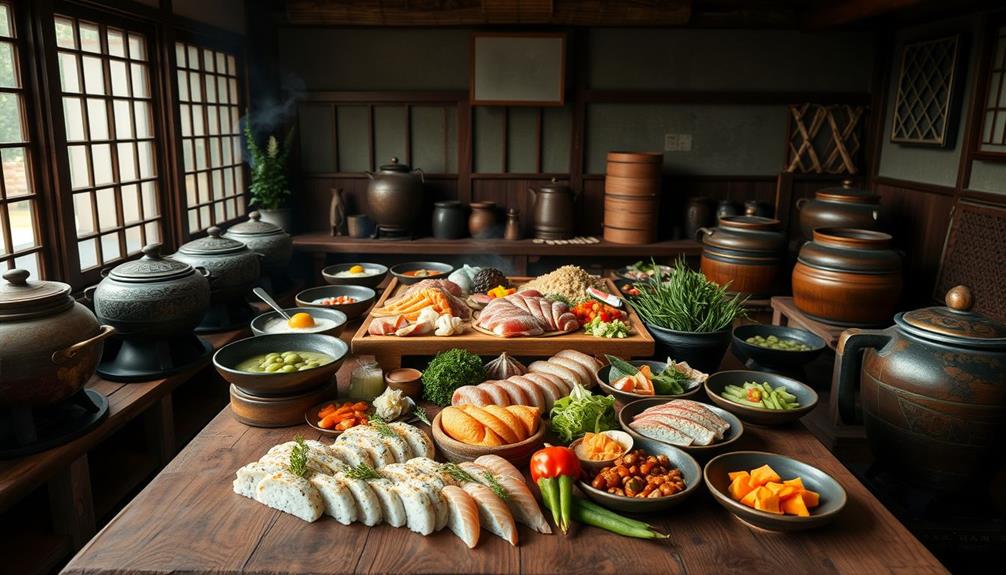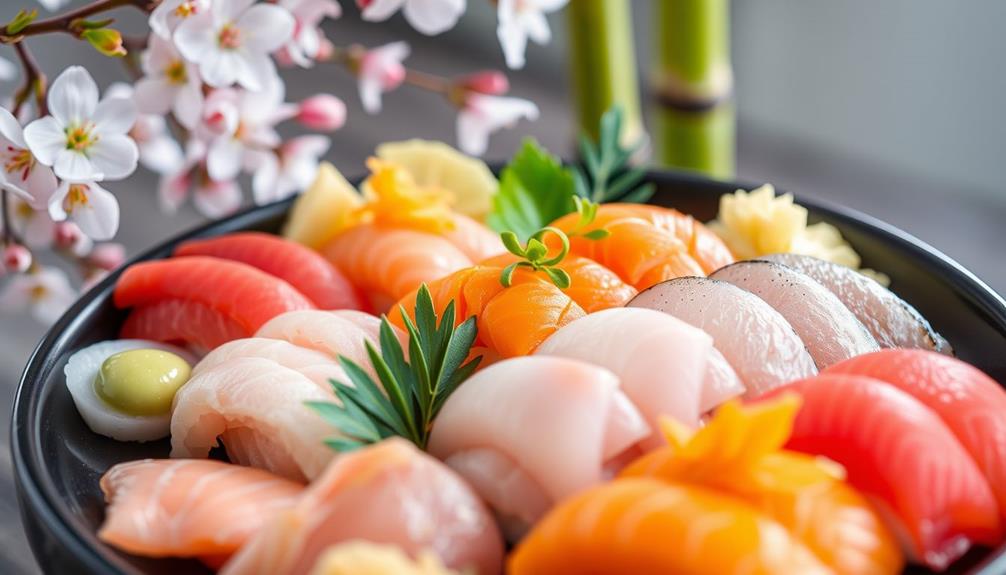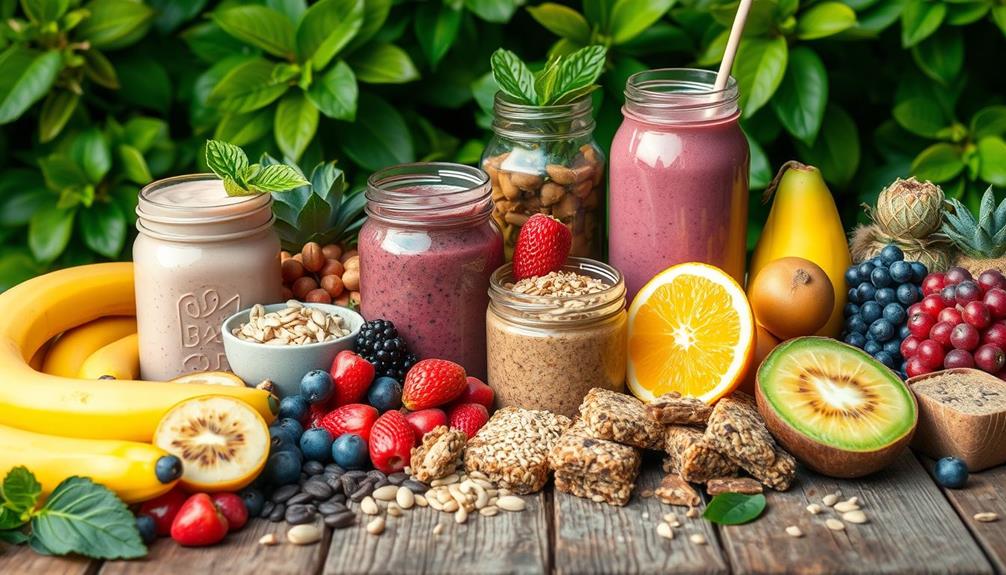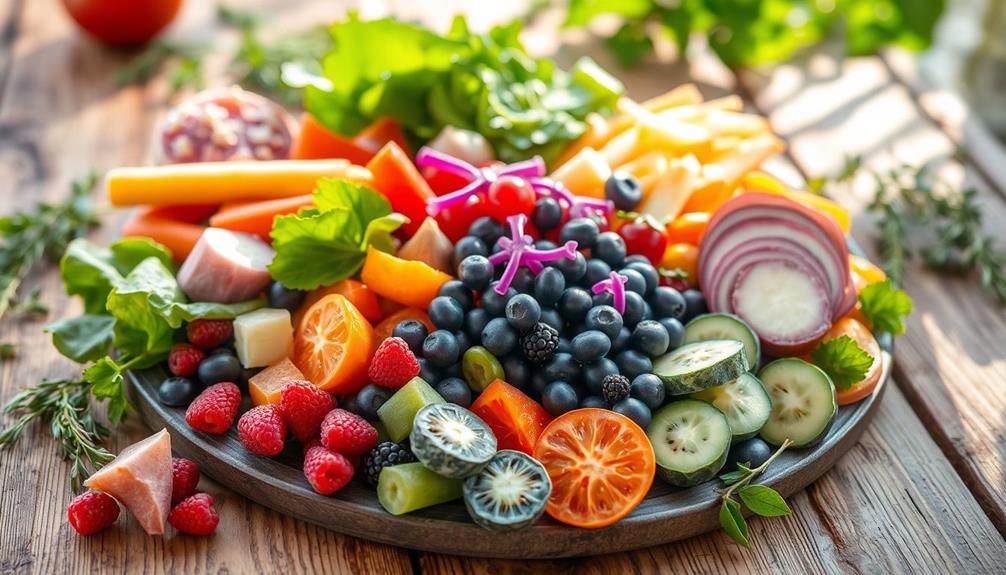Japanese people eat a lot of raw food due to cultural beliefs centered on purity and respect for nature. Rooted in Shinto and influenced by Buddhism, their cuisine prioritizes fresh seafood over red meat. Dishes like sushi and sashimi highlight the beauty of seasonal ingredients, showcasing Japan's geographical advantage for accessing fresh fish. The focus on freshness enhances flavors and contributes to a balanced diet. Additionally, modern trends emphasize health and sustainability, making raw fish increasingly popular. If you're curious about how these factors intertwine and shape Japanese dining traditions, there's more to explore.
Key Takeaways
- Raw fish consumption in Japan is rooted in Shinto beliefs, emphasizing purity, cleanliness, and a deep respect for nature.
- Historical practices, like Namasu and sashimi, showcase Japan's long-standing appreciation for fresh seafood and seasonal ingredients.
- The decline in red meat consumption, influenced by Buddhist teachings, has led to a preference for seafood as a cleaner alternative.
- Freshness is prioritized in Japanese cuisine, enhancing flavors and textures, with strong seasonings like soy sauce used to maintain quality.
- Modern trends highlight the health benefits of raw fish, driving demand for sushi and sashimi in a global culinary landscape.
Cultural Significance of Raw Fish
In Japan, the cultural significance of raw fish goes beyond mere culinary preference; it's woven into the fabric of Shinto beliefs that prioritize purity and cleanliness.
This deep-rooted reverence for fresh seafood shapes Japanese food culture, where eating raw fish isn't just about flavor but also about honoring tradition and nature. The careful selection and preparation of ingredients are akin to the meticulous processes involved in brewing coffee, where understanding the mechanics of French press can enhance the experience.
Historically, Japan's geography as an island nation has made fish a primary food source, giving rise to a culinary tradition that embraces various cooking methods, especially raw preparations. Sashimi, which gained popularity during the Muromachi era, exemplifies this cultural appreciation, showcasing the freshness of seasonal ingredients.
With the decline in red meat consumption influenced by Buddhist teachings, seafood emerged as a cleaner, purer alternative.
Dishes like sushi and sashimi symbolize more than just culinary artistry; they reflect a profound connection to marine life and nature.
Each bite embodies the meticulous preparation techniques that highlight the beauty of ingredients. So, when you indulge in raw fish, you're partaking in a rich cultural tapestry that celebrates purity, tradition, and the essence of Japanese food culture.
Historical Context of Raw Food

Raw food consumption in Japan has a rich history that stretches back over a thousand years, beginning with dishes like Namasu, which featured pickled raw fish with vinegar during the Nara period (710-794).
As you explore Japanese cuisine, you'll notice that the popularity of raw fish evolved markedly over time, paralleling the importance of fresh ingredients in investment strategies. During the Muromachi era (1336-1573), sashimi emerged as a beloved dish, highlighting the growing appreciation for fresh, raw ingredients.
The Edo period (1603-1868) marked a turning point, with the renowned sushiman Hanaya Yohei introducing fresh sushi to the masses. This era emphasized not only the culinary skills involved but also the significance of freshness and quality.
The historical practices of fermenting fish laid the groundwork for sushi and sashimi, demonstrating how traditional methods continue to shape modern Japanese cuisine.
Japan's geography plays a vital role in this culinary landscape. With its extensive coastlines and a population centered near the sea, access to a variety of fresh fish has always been easy.
This accessibility has deeply influenced dietary habits, making raw food an integral part of Japanese culture and cuisine. Historically, the practice of consuming raw food in Japan has also been influenced by cultural reasons for raw food consumption. For example, the Japanese believe that eating raw fish preserves its natural flavors and textures, allowing them to appreciate the quality and freshness of the seafood. Additionally, the traditional Japanese diet emphasizes the consumption of raw vegetables and fruits as a way to maintain a healthy and balanced lifestyle.
Taste and Preference for Freshness

Japanese cuisine celebrates the unique flavors and textures of raw fish, making freshness a top priority. When you indulge in traditional Japanese dishes like sushi and sashimi, you experience the exceptional taste that only fresh seafood can provide.
The culinary culture in Japan places immense importance on using ingredients at their peak, prompting chefs to prepare seafood immediately after it's sourced. This practice not only enhances the natural flavors but also guarantees that you're enjoying the best quality. Additionally, the emphasis on a balanced diet, rich in fresh ingredients, contributes to overall health, similar to the principles observed in lifestyle for longevity.
To complement raw fish, strong seasonings and fermented condiments, such as soy sauce, are often used. These additions not only elevate the taste but also help inhibit bacterial growth, allowing you to savor your meal without worry.
This dedication to freshness has contributed to the global popularity of sushi, with many international restaurants adopting and adapting these raw fish dishes.
In Japan, the preference for high-quality seafood drives demand, making raw fish a staple in both everyday meals and special occasions. Whether you're enjoying a casual sushi lunch or celebrating with a beautifully arranged sashimi platter, you can appreciate the cultural significance of freshness in traditional Japanese cuisine.
Religious and Ethical Influences

Throughout history, religious and ethical beliefs have significantly shaped dietary practices in Japan, particularly concerning the consumption of seafood. Shinto beliefs emphasize cleanliness and purity, making fresh raw fish a spiritually significant food choice. This connection to purity aligns with the Japanese tradition of eating raw fish, as it reflects a respect for natural flavors and an appreciation for freshness.
Additionally, the cultural emphasis on emotional regulation and connection within Japanese society may parallel the values seen in the management of emotional responses, akin to those in individuals with BPD dynamics in relationships. Buddhism has also influenced dietary habits, leading to a decline in red meat consumption. Many Japanese view seafood as a cleaner alternative, as red meat is often perceived as impure in various religious customs. This perception reinforces a cultural shift toward seafood, making it an ethical choice aligned with spiritual values.
Moreover, ethical considerations regarding animal slaughter play a vital role in these dietary preferences. Many Japanese opt for fish not only for taste but also as a reflection of their beliefs about purity and respect for life.
As a result, the consumption of seafood, especially raw fish, is deeply intertwined with Japan's religious and ethical landscape, shaping both culinary traditions and daily eating habits.
Modern Trends in Raw Food Consumption

The influence of traditional beliefs on dietary practices continues to shape how raw food is consumed today. You've likely noticed the global fascination with sushi and sashimi, which has led to a surge in sushi restaurants and raw fish dishes around the world. This trend reflects a growing appreciation for Japanese cuisine, driven by health trends that highlight the benefits of omega-3 fatty acids found in raw fish.
Moreover, the high levels of antioxidants in foods like raw vegetables and fruits are increasingly recognized for their health benefits rich in antioxidants.
Urban areas, in particular, have seen an increased demand for raw food options, as people become more health-conscious. Additionally, the popularity of juice diets has also contributed to this trend, as many individuals seek out nutrient-rich options that align with a raw food lifestyle.
Furthermore, fusion cuisine has emerged, incorporating raw fish into various culinary styles, making raw seafood appealing beyond its traditional Japanese roots.
You might also consider the importance of sustainable fishing practices, which many consumers now prioritize. This focus aligns with modern values around health and environmental responsibility, encouraging restaurants to source their seafood ethically.
Frequently Asked Questions
Why Do Japanese People Eat a Lot of Raw Food?
You might notice Japanese people enjoy raw food for its freshness and unique flavors. Their access to high-quality seafood and health benefits, like omega-3s, make raw dishes both delicious and nutritious, enhancing their culinary experience.
Why Is Food Such a Big Part of Japanese Culture?
Food's a big part of Japanese culture because it reflects seasonal changes and emphasizes freshness. You'll find that meals celebrate nature's bounty, showcase artistry, and foster community, creating meaningful connections around the dining table.
Why Do Japanese People Like Sushi so Much?
You love sushi because it combines fresh, high-quality ingredients with artistic presentation. Each bite offers a unique flavor experience, while the strong seasonings enhance the taste, reflecting Japan's deep appreciation for culinary craftsmanship and seasonal delicacies.
Why Is Sushi Important to Japanese Culture?
Did you know that sushi accounts for nearly 60% of Japan's seafood consumption? Sushi's importance lies in its representation of tradition, culinary artistry, and the deep respect for nature and ingredients ingrained in Japanese culture.
Conclusion
So, next time you savor sushi or sashimi, think about how deeply intertwined raw food is with Japan's culture and history. You might find it fascinating that what started as a necessity has transformed into a culinary art form that celebrates freshness and quality. It's no coincidence that your taste buds are drawn to these vibrant flavors—each bite connects you to centuries of tradition and a collective appreciation for the beauty of raw food.










